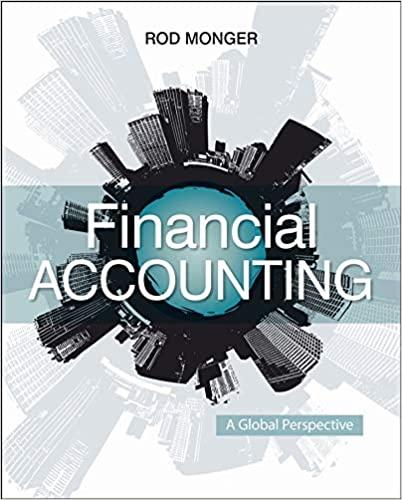Question
Scrappers Supplies tracks the number of units purchased and sold throughout each accounting period but applies its inventory costing method at the end of each
Scrappers Supplies tracks the number of units purchased and sold throughout each accounting period but applies its inventory costing method at the end of each period, as if it uses a periodic inventory system. Assume its accounting records provided the following information at the end of the annual accounting period, December 31.
| Transactions | Units | Unit Cost | |||||||
| Beginning inventory, January 1 | 210 | $ | 34 | ||||||
| Transactions during the year: | |||||||||
| a. Purchase on account, March 2 | 305 | 36 | |||||||
| b. Cash sale, April 1 ($50 each) | (360 | ) | |||||||
| c. Purchase on account, June 30 | 260 | 40 | |||||||
| d. Cash sale, August 1 ($50 each) | (90 | ) | |||||||
TIP: Although the purchases and sales are listed in chronological order, Scrappers determines the cost of goods sold after all of the purchases have occurred.
Required:
- Compute the cost of goods available for sale, cost of ending inventory, and cost of goods sold at December 31 under each of the following inventory costing methods: (Round "Cost per Unit" to 2 decimal places.) a. Last-in, first-out. b. Weighted average cost. c. First-in, first-out. d. Specific identification, assuming that the April 1 sale was selected one-fifth from the beginning inventory and four-fifths from the purchase of March 2. Assume that the sale of August 1 was selected from the purchase of June 30.
- Of the four methods, which will result in the highest gross profit? Which will result in the lowest income taxes?
a. Compute the cost of goods available for sale, cost of ending inventory, and cost of goods sold at December 31 using the LIFO method. (Round "Cost per Unit" anwers to 2 decimal places.)
|
b. Compute the cost of goods available for sale, cost of ending inventory, and cost of goods sold at December 31 using the Weighted average method. (Round "Cost per Unit" anwers to 2 decimal places.)
|
c. Compute the cost of goods available for sale, cost of ending inventory, and cost of goods sold at December 31 using the FIFO method. (Round "Cost per Unit" anwers to 2 decimal places.)
|
Step by Step Solution
There are 3 Steps involved in it
Step: 1

Get Instant Access to Expert-Tailored Solutions
See step-by-step solutions with expert insights and AI powered tools for academic success
Step: 2

Step: 3

Ace Your Homework with AI
Get the answers you need in no time with our AI-driven, step-by-step assistance
Get Started


